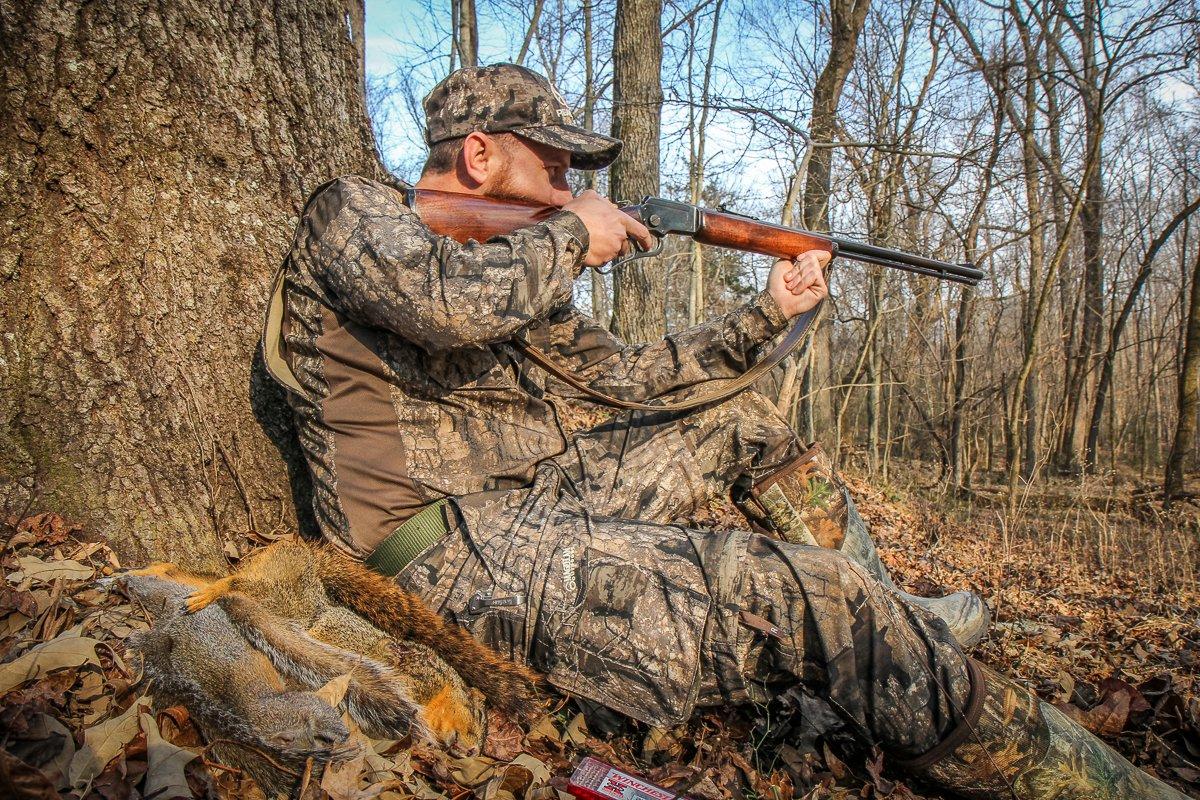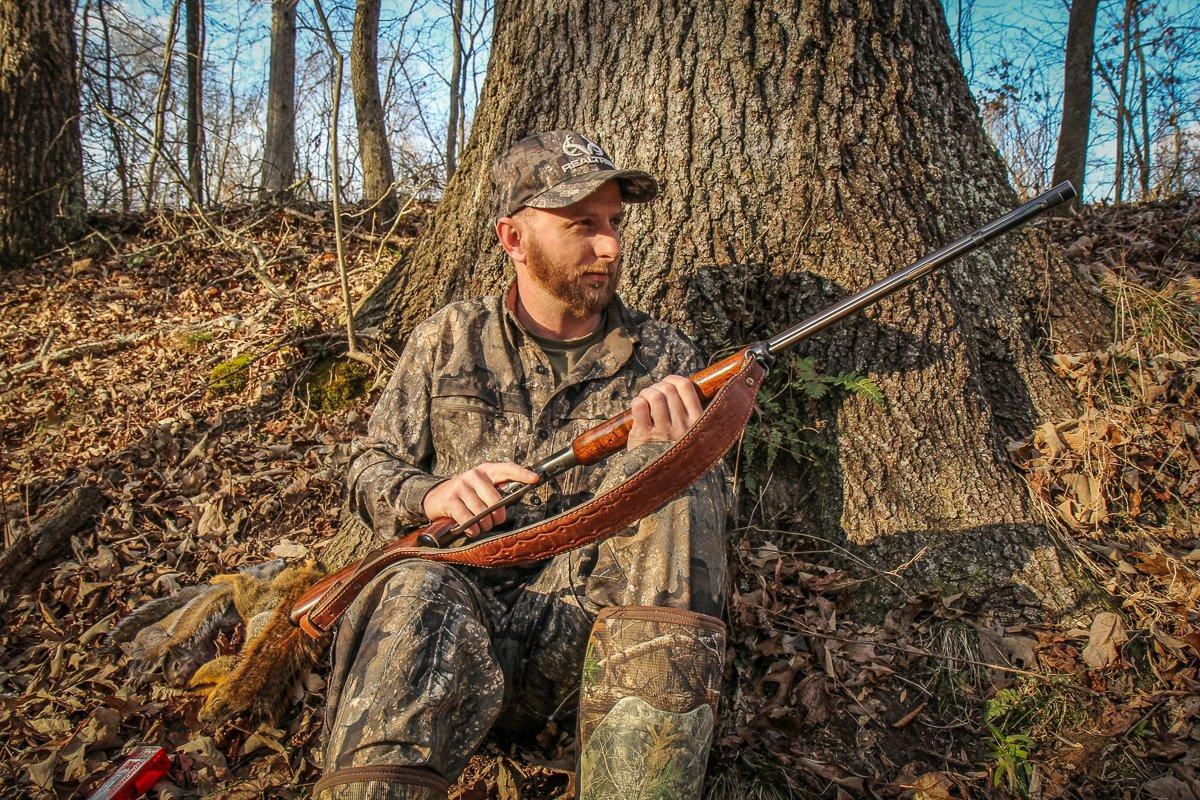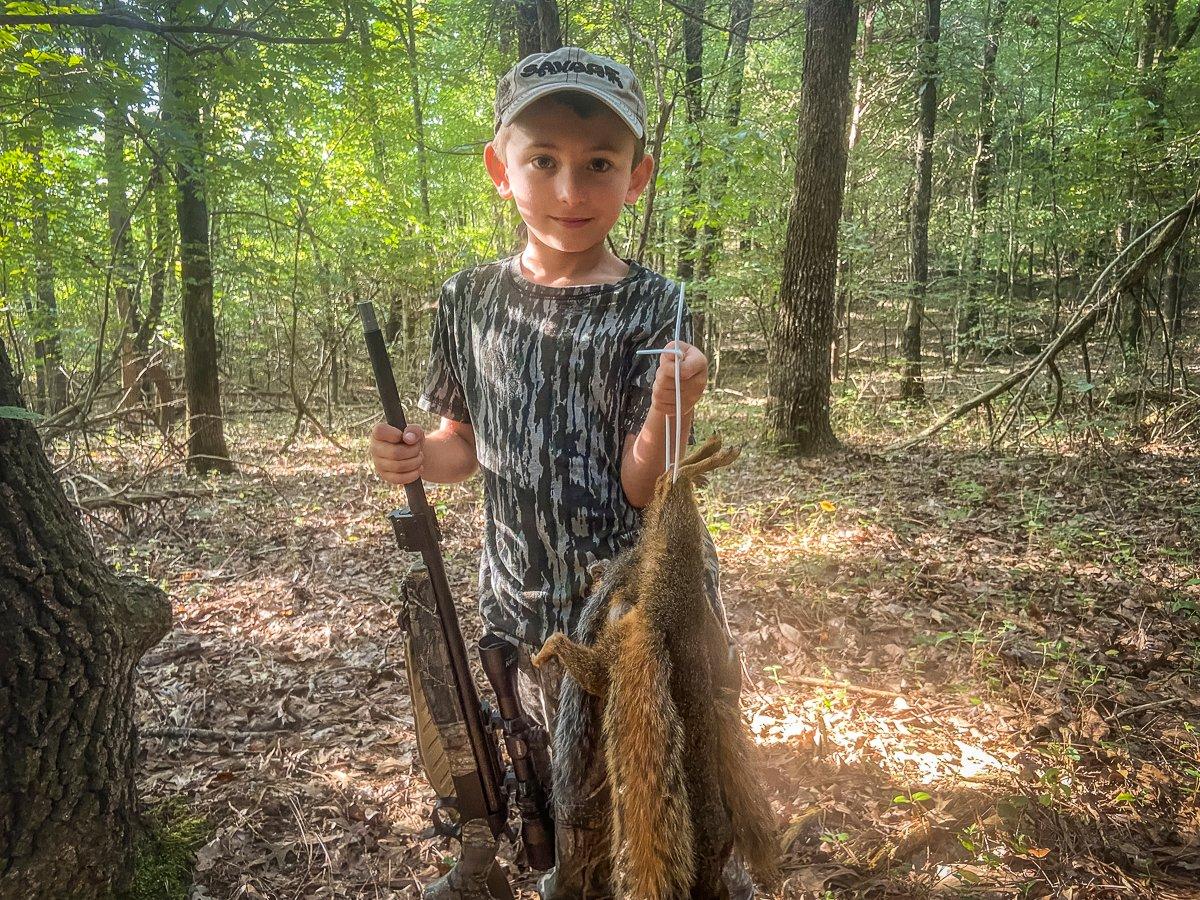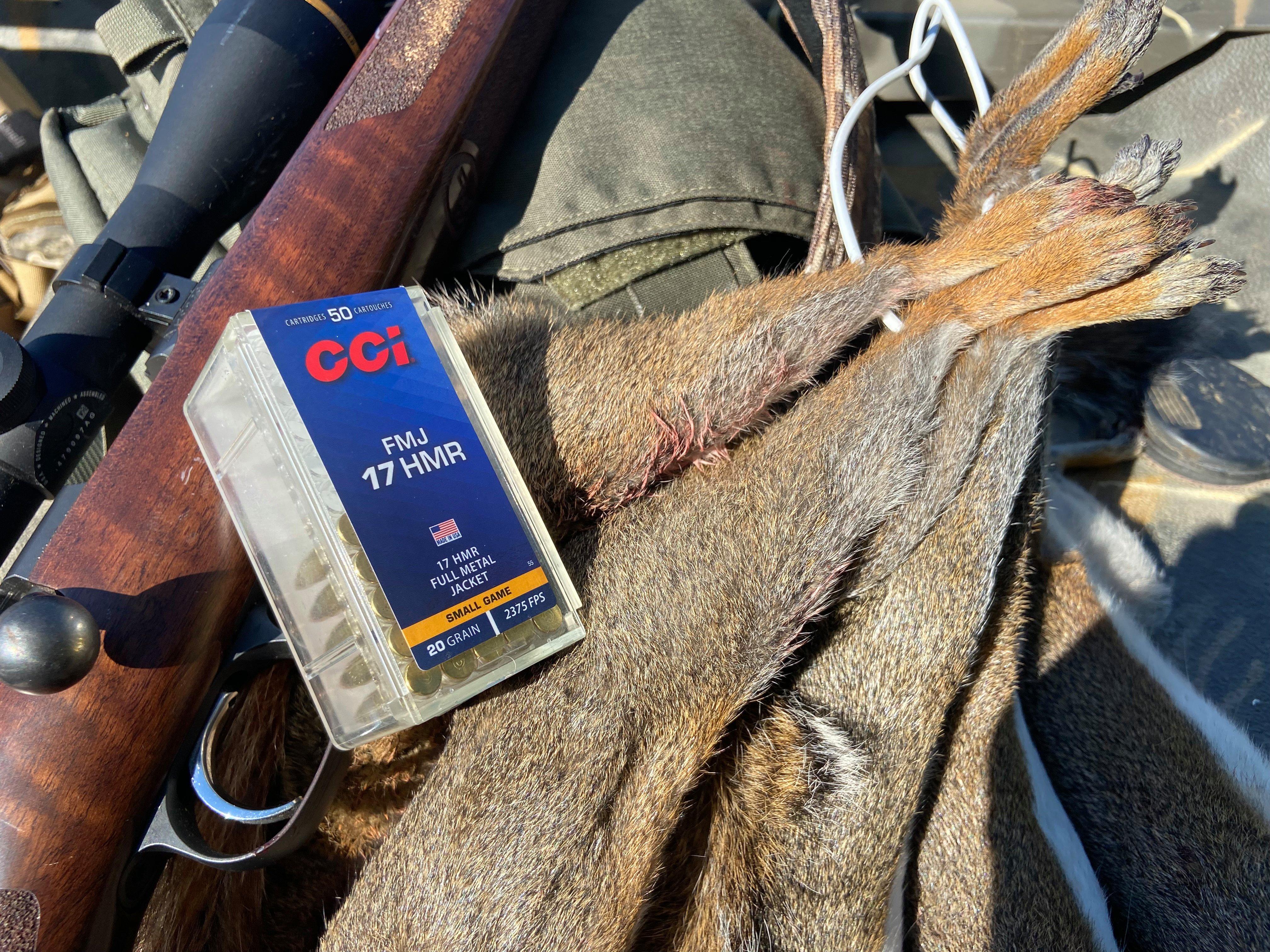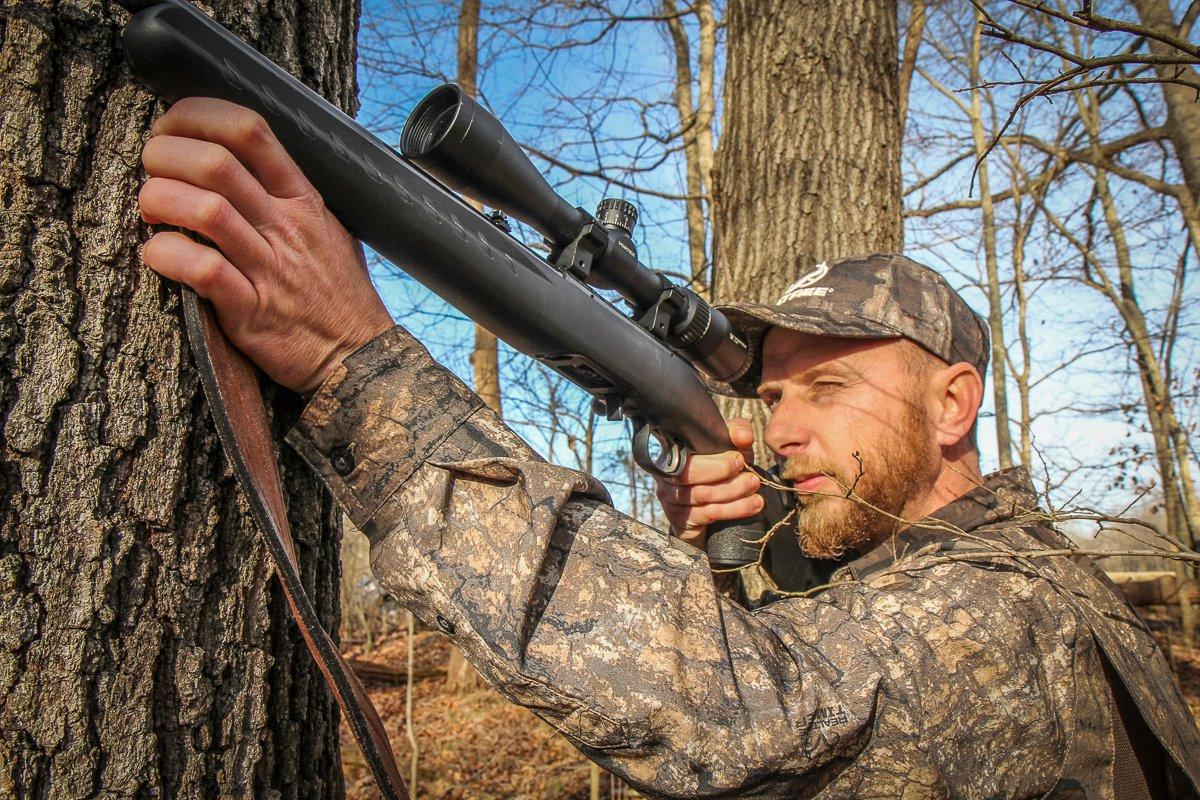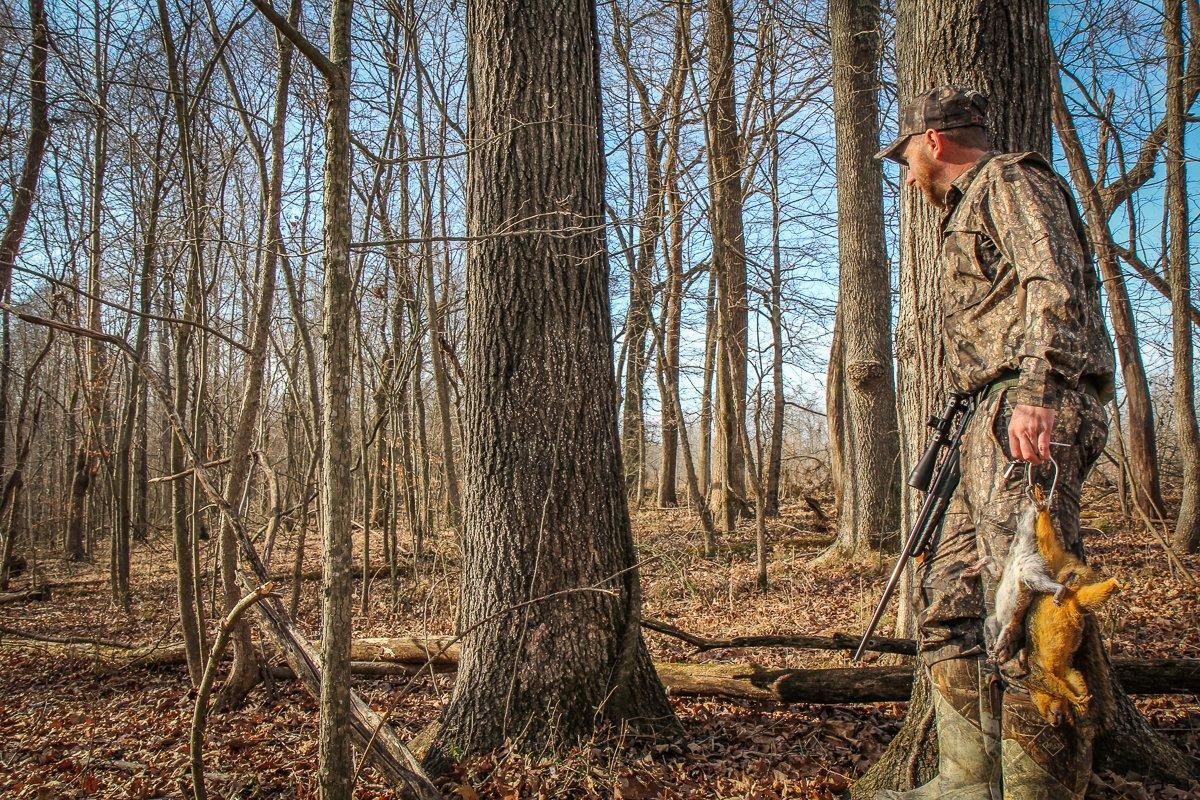At some point in recent history, squirrel hunting fell down the totem pole of upland game acceptability. Doves, quail, grouse, rabbits, and ring-necked pheasants — a species not even native to this country — all command more admiration and respect from a genteel crowd than squirrels. That’s a shame, because squirrels are perhaps the most abundant, accessible game animal in North America.
Still, there’s something of a stigma attached to hunting them. They’re rodents, chased in the hills and hollers by hillbillies (as a fun aside, the gray squirrel is the state game animal of Kentucky). Fortunately, stigmas have never bothered hillbillies all that much. We just keep right on shooting and eating squirrels, taking quiet pride in the woodsmanship learned along the way, and stopping to appreciate all the good country we still have mostly to ourselves.
But if you want to pal around with people like us, welcome to the fold. These 25 tips will help you get started.
1. Become an Amateur Arborist
A squirrel’s diet changes depending on season and location, but generally, during fall hunting seasons, they’re eating hard mast like acorns and hickory nuts. Simply knowing how to identify those trees by their bark, leaf shape, and mast they produce is the first step in finding squirrels. A close second is knowing where those trees are likely to grow in the forest. Understand that and you can frequently eliminate unproductive squirrel country simply by looking at a topographic map or app.
2. Understand the Seasonal Rotation
Squirrels like mast in the fall, but it’s not all ripe at the same time. Around here, they love pine cones in the late summer, but transition quickly to hickories through about the first of September. They’ll eat beech nuts in early October if there’s a crop of them, and after that, falling white oak acorns will bring an entire woods’ worth of squirrels out of the treetops to forage on the ground, where they’ll feed most of the winter.
3. Start High, Move Low
Hickory trees are the classic place to squirrel hunt in early fall, since one good shagbark or pignut (You did learn to identify those, right?) can draw multiple squirrels at a time. Squirrels feeding in these trees are noisy and fairly easy to locate — and you can scout good trees ahead of time simply by looking for cuttings at the base of the tree. When you’re scouting for the first ripe hickories of the season, maybe for opening morning, look to the ridgetops first, since those trees seem to ripen just a few days earlier than the trees at lower elevation.
4. Hunt with Your Ears
Squirrels make particular noises, whether they’re dropping golf ball-sized nuts out of the treetops, searching for acorns on the ground, or barking at a predator. Other critters such as blue jays and woodpeckers make similar noises — but they’re not the same. Good squirrel hunters know they’ll locate half or more of their game by hearing them first, and by recognizing what is indeed a squirrel and what is something else. With experience, you’ll learn, too — but you have to shut up and listen.
5. Still Days are Best
Squirrels can seem invisible on windy days. My favorite days to hunt are 12 hours or so after a steady rain, when the woods are dead still. I don’t want water droplets dripping from the trees — they’re hard to distinguish from squirrel cutting sounds — but I do like for the ground to be damp and soft for sneaking around. When there’s no breeze stirring, squirrels are easy to spot jumping about up in the trees. Shoot, I get excited just thinking about a morning like that.
(Don’t Miss: Memories of Squirrel Camp)
6. Don’t Forget Soft Mast
Hickories and oaks rightfully get most of the glory, but squirrels do relish soft mast at certain times. During the spring season, mulberries and flowering tulip poplars are good trees to check. In the early fall, wild grapes, dogwood berries, and wild cherries attract squirrels.
7. Bring Binoculars
A 14-ounce squirrel feeding in a hickory 80 yards high is tough to see when the leaves are green and thick, and they can be even tougher to see when they’re alarmed and hiding. A good pair of binoculars can save you a lot of eyestrain.
8. Bring a Laser Pointer
Speaking of eyestrain, a laser pointer is an incredible tool for pointing out squirrels that you can see to hunting companions who can’t see them. Just the other day, my 8-year-old borrowed my laser pointer to show me a squirrel balled up on a limb that might as well have been invisible to me. Lasers aren’t legal to use everywhere, so check your local regs before trying them.
9. Hunt Gray Squirrels in Big Woods
Many public-land tracts in the East are noted for huge swaths of aging timber, with a dark canopy and open understory. That’s not ideal habitat for whitetails or grouse, but it’s just about perfect squirrel country. If you want to find squirrel trees and gray squirrels, head to the biggest block of old-growth timber you know of and start scouting.
10. Hunt Fox Squirrels in Woodlots
Though there is certainly overlap between the two, fox squirrels — which are noted for their striking rufous coloration and large size — are more typically denizens of small woodlots and ag field edges. In fact, as you get into Midwestern farm country, fox squirrels can outnumber grays as the most common species seen.
(Don’t Miss: Guide to Blackpowder Squirrel Hunting)
11. Shoot Like a Turkey Hunter
Even with a shotgun, most shots are taken at stationary squirrels. Squirrels are also physically tough with a dense hide. If I’m toting a shotgun, I’ll pair it with a full choke or even a turkey tube to ensure a dense pattern and clean kill. Lately, I’ve seen several squirrel hunters use lightweight .410 turkey single-barrel guns topped with optics, and they’re just ideal for the task.
12. Use Enough Shell
Save the light loads for the skeet range or dove field. It’s worth splurging for heavier high brass game loads when squirrel hunting. From a 20-gauge, I like a full 1-ounce load of No. 6 lead, like Federal’s Heavy Field Game Load. In my son’s .410, the 3-inch, 11/16-ounce load of 6s works well out to 30 yards — again, when paired with a tight choke. Assuming your gun patterns it well, larger No. 4 shot provides good terminal effect on squirrels without filling the edible quarters with lead.
13. Tote a .22
An accurate .22 rifle is the quintessential squirrel gun, and using it effectively requires a step up in skill from using a shotgun. Open-sighted rifles work, particularly at close range, but a good scope allows for more precision shooting. A worthy squirrel rifle will put five shots into a quarter-sized group at 25 yards. Can it be called a squirrel rifle if it shoots wider than that? Meh, maybe you need more practice. Opinions vary on the best load for squirrels, but I prefer high-velocity hollowpoints such as the 36-grain CCI Mini-Mag or 37-grain Winchester Super X Copper-Plated Hollowpoint.
14. Tote a Magnum
Though I grew up hunting with a .22 and still frequently carry one today, my modern squirrel rifle of choice is actually a bull-barreled .17 HMR loaded with CCI’s 20-grain full-metal jacket. With a muzzle velocity of almost 2,400 fps, the round has a flat-enough trajectory to hit a squirrel through the head to 100+ yards, and off-the-shelf .17s are, in my experience, incredibly accurate. The FMJ bullet keeps meat destruction to a minimum, though I still prefer head-shots. If you’re using anything frangible (which, most .17 HMR bullets are polymer tipped or hollowpoint), head-shots are mandatory.
15. Learn to Rest
One lesson from squirrel hunting that’s applicable to hunting everything else is learning to find make-shift gun rests in the field. Not many people can consistently hit squirrels in the head with a rifle, off-hand. Taking a post off a tree, and using your hand to buffer the forend from the bark, is about as solid as it gets in the woods, and it’s fast. Right-handed shooters need to use the left side of the tree when possible.
(Don’t Miss: Tips for Hunting Fox Squirrels)
16. Carry Sticks
Sometimes, there’s not a good rest tree growing exactly where you need it. In that case, a set of shooting sticks (I like Primos Trigger Sticks) is pretty handy. They make for a decent walking staff the rest of the time, too.
17. Be Careful with Squirrel Calls
Squirrel calls are usually designed to imitate a squirrel’s bark or the distress sounds of a young squirrel. Both sounds will cause nearby squirrels to take notice and sometimes bark in response — but they put the critters on high alert, too. Sometimes I’ll use a squirrel call to make a stubborn squirrel show itself, or I might make a little barking chatter to stop a squirrel for a shot. Otherwise, keep quiet.
(Don’t Miss: 20 Years Later, the .17 HMR is the Best Rimfire Round Made for Hunting)
18. Circle a Tree
Gray squirrels will often run when spooked, but sometimes they hunker down and hide (fox squirrels almost always try to hide). As you circle the tree for a shot, they will circle in turn, using the tree trunk to obscure themselves from your view. When you’re hunting alone, this can make it difficult to get a shot. I’ve thrown limbs to the opposite side of the tree and even tied ropes to saplings and shaken them, with mixed results. But if you’re hunting with a buddy, one of you can almost always circle the tree and push the squirrel around for a better shot. The squirrel will move away from the person who’s moving, so the shooter should find a good opening and steady rest — and be ready to shoot soon as the buddy makes the circle. When pressed, gray squirrels will frequently jump tree and run.
19. Hunt Over a Dog
I’ll fully confess to not being a dog guy. I don’t have the patience to be a trainer, and I prefer to sneak up on squirrels for a shot. That said, hunting with dogs is fun, and most serious squirrel doggers are eager to introduce people to the sport — particularly if you know of a good place to let them run their dogs. Squirrel dogging is at its best in the late season because squirrels are foraging on the ground, where dogs can both see and smell them, and because the barren trees make it easier to locate them for a shot. If you’ve got designs on trying it, stockpile a few places to go for a winter hunt, and then don’t be shy about asking.
20. Take a Kid
Even under the best of circumstances, deer and turkey hunting involve a lot more boring moments than exciting ones. With squirrel hunting, you can stay on the move, and your kid can kick mushrooms and play in the creek in between stops. Yet, squirrels are surprisingly wary, so a kid learns fast to shut his mouth and keep still, too, if he wants fried squirrel and ketchup for dinner. It’s all a wonderful lesson. Speaking of dinner, if you only bag one squirrel with your kid by your side, remember that it’s still worthy of a feast. Take it home, cook it up, and celebrate properly.
(Don’t Miss: 5 Ways to Ruin a Squirrel Dog)
21. Skin Clean
There are plenty of ways to skin a squirrel, and you should learn a couple to see what works best for you. Regardless, show up to the cleaning station prepared to do a clean job. I like a slick 2×8, upon which to set my skinned squirrels as I work, and running water available if possible. Soon as the skin is off, get it and the tails away from the meat, and rinse the meat frequently as you work. Squirrel hair belongs on fishing lures, not the dinner table.
22. Bring Shears
The handiest squirrel-cleaning tool ever made is a pair of heavy-duty game shears or utility scissors. I buy a new set from the hardware store every couple seasons. They work to snip off squirrel feet, and cut right through bones. A properly cleaned squirrel should render two front legs, two hind legs, and the saddle, which is the middle of the back (bone-in) with two backstraps attached.
23. Age a Squirrel
The time-honored way to age a big male squirrel is by looking at the balls, which are perhaps proportionately larger than those of any other creature on Earth. If you couldn’t show them to your mother without blushing, that squirrel is likely to be tough. Save him for the stew pot and slow cooking. Young squirrels are better for frying.
24. Make a Hanger Tote
Get a wire coat hanger and snip it apart on both the top and bottom. The wire should be about 7 inches long on the top and bottom when you’re done, and shaped into a rough V. Curl a hook into the top wire with pliers, so that you can loop it around the bottom wire, and clip it on and off. Thread the bottom wire through a dead squirrel’s rear-leg tendons, and you’ve got a perfect squirrel tote that will hang securely from a belt loop or pack.
25. Scout from Your Stand
One for the deer hunters: Ever seen a squirrel from your stand? I have. There are, in fact, few feelings better than walking to a ridge with a rimfire in hand to exact hell on the marauding bushytails that sound just like 160-inch bucks running all over creation. Don’t forget about them after your deer tag is filled — or even if it’s not. Sometimes, hillbillies need a break from being scent-free, low-impact, and generally stressed about hunting.
This is, after all, supposed to be fun. Once you try it, you’ll realize there’s no shortage of fun in squirrel hunting.
(Don’t Miss: 10 Tips for Training a Squirrel Dog)






